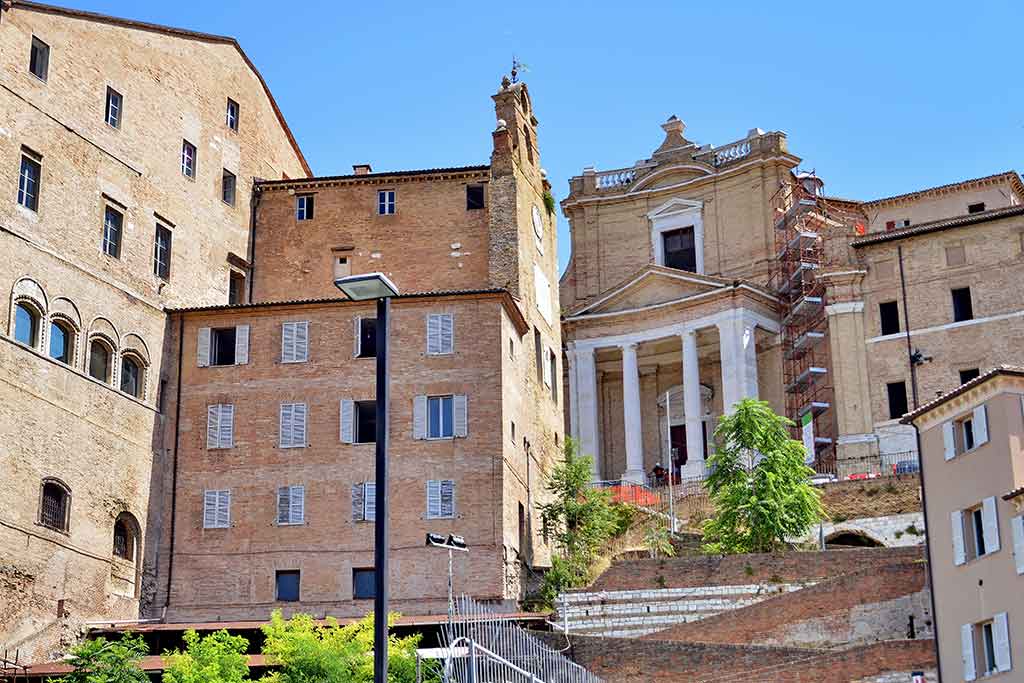Welcome
to Ancona Italy. If you’are planning to visit Ancona for your next trip and you are
looking for the best places to visit, here you’ll find tips and suggestions of most
popular point of interest and activities not to be missed in Ancona and surrounding.
Travelers will appreciate this italian town with
his rich historical and artistic heritage, local culture and environment. Discover the monuments, buildings, natural
treasures and all the details that characterize Ancona and its territory. Share and suggest a place you've
visited.

Ancona, historic buildings in the center
Seen from above it is well seen that Ancona is built on the hills and that the port remains protected in the bay. Right in the bay the architect Luigi Vanvitelli designed the island and the military building known as Mole Vanvitelliano. It was a beautiful project, the pentagonal structure had to be self-sufficient in everything and could accommodate up to 2,000 people. It was built in 1733, in the most prosperous period of the city. The idea of building it out of town, in the middle of the water had more than one reason. Ancona was then an important port where people and goods came from all over the world.
The lazaretto, so it was called in reality, served for the quarantine of people, also functioned as a warehouse of goods and was a facility defensive of the port for both enemies and storms. Even the water supply was detached from the city. A system of underground tanks was created, still visible in the inner courtyard.
The mole is connected with the mainland through a single passage, for years it has been employed as a prison and also as a sugar factory but today it is used as a cultural center for exhibitions and events.
The Arch of Trajan is the oldest testimony of Ancona and is in good shape, even if over the centuries it has lost its equestrian statue of Trajan on top and the other bronze statues and decorations that were throating enemies on duty. It was a construction erected as a thank you to the Emperor Trajan who made the port and fortifications expanded. The inscriptions are still visible on the marble arch. With a nice walk above the city walls you can admire the view of the harbor and arrive at this Roman monument.
The Merchants Lodge, near the port, is from the '500 with a beautiful facade with 4 statues representing Hope, Fortress, Justice and Charity. The merchants found themselves there to discuss and deal with the goods that passed through the city's port.
written by Arthur Burley - Last update: 26/07/2022
This guide has been translated automatically through a third party service. Visititaly offers these automatic translations to help site visitors, however the automatic translations may contain inaccuracies, errors or inaccuracies. You can contact us to report inaccuracies or errors and we will check the translation.